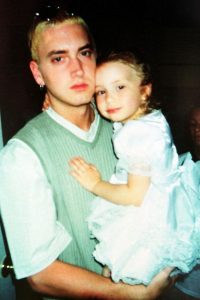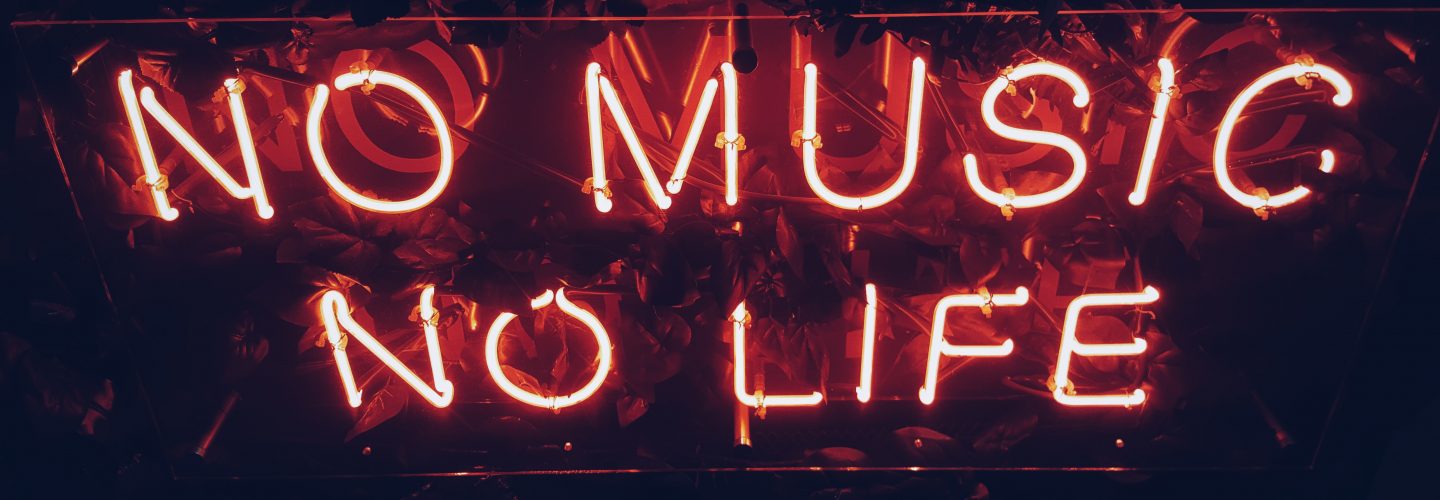
Modern rap is one of the most popular genres of music in the world. In 2018, 21.7% of total music consumption fell under rap – more than jazz, classical, R&B, and country combined17. As such an influential musical genre, it is important to understand the sociocultural messages that are being conveyed through its artists. Numerous rappers have made commentary on sensitive subjects through their lyrics; the most prevalent of these being issues relating to race and gender. The three rappers widely regarded as the most talented of the 21st century are Kendrick Lamar, Marshall Mathers (Eminem), and Jermaine Cole (J. Cole). Each of these rappers have made music that sends different ideas and perspectives on gender.
J.Cole
Cole has cemented himself as one of the most progressive rappers in the industry. Unlike many of his contemporaries, J. Cole attended and graduated college from St. John’s University in New York City where he was on an academic scholarship. As an educated man, J. Cole is very aware of his influence on the ideals of his listeners, especially in the millennial and Generation Z age groups22. J. Cole has made many meaningful pieces promoting awareness about issues and preconceptions faced by both genders. In his song “Crooked Smile”, he speaks on the pressure that people feel to mask their imperfections from the rest of society.
https://www.youtube.com/watch?v=eCxaXqwRhvw
His lyrics clearly indicate that this is a pressure most heavily felt by women. In the lines, “With all the pressure to look impressive and go out in heels. I feel for you. Killing yourself to find a man that will kill for you”, Cole conveys how women will go to extreme lengths to make sure they look aesthetically beautiful. He also says how women will do this not for their own fulfillment, but out of a desire to impress and attract the opposite gender. This is a source of stress for so many girls and women in modern society and is a pressure that is relatively newer for the female gender. Only about a century and a half earlier, the physical pressure on women was reversed. In the opera Carmen, Carmen shocked audiences through her promiscuous appearance and behavior. The setting takes place in mid-19th century Spain where women were expected to remain reserved and temperate in their appearance and manner. In this time, Carmen acted as a symbol of defiance for gender stereotypes. Unlike Carmen, “Crooked Smile” implores women to defy the modern social convention of their gender by placing less pressure on their looks. “No need to fix what God already put his paintbrush on”, sends the message that trying to fix physical imperfections is pointless and an irrational focus. “Cause what’s real is something that the eyes can’t see”, tells women that the thing that truly matters is what is inside of them – their talents, interests, and dreams. Furthermore, the female background chorus in this song lends the music an empowering feminine tone. Cole also manages to intertwine the issue of race in “Crooked Smile”. J. Cole raps, “I asked if my skin pale, would I then sell like Eminem or Adele?”, bringing up the question of whether his race has impacted his musical success (also referencing his white contemporary Marshall Mathers).
In his song “4 Your Eyez Only”, J. Cole addresses male stereotypes by talking about his close friend that was murdered. In this song, Cole is speaking to the daughter of his deceased friend. Since she is a young girl, J. Cole raps in a gentle and softer tone compared to his other songs. This mirrors other musical pieces where having a female subject was shown to result in softer vocals. Cole describes what his friend was like through the time he knew him. “Not because he was the first to get some pussy twelve years old…Not because he went from bagging up them grams to serving O’s…Not because he lived a life of crime and sat behind bars…Not because he screamed fuck the lord although that was true.” His friend is indirectly characterized as tough, a womanizer, and a daredevil. All these characteristics are associated with traditional masculinity in society. Men often engage in reckless behavior and dangerous activities like those described in the life of Cole’s friends, simply in order to be perceived as more masculine in the eyes of society. Cole’s powerful message in response to this gender convention comes in his last line, “Your daddy was a real nigga because he loved you.” After listing all the macho characteristics his friend possessed, Cole states that the defining trait that made his friend a real man was the deep love he had for his daughter. J. Cole expresses the idea that showing emotion and affection does not diminish masculinity, a lesson that can greatly impact his male fans.
Kendrick Lamar
Another song that tackles gender pressure felt by males is “The Art of Peer Pressure” by Kendrick Lamar.
Kendrick grew up in Compton, CA. surrounded by gang activity. He was exposed to violence, drugs, and other negative influences throughout his childhood. In this song, he narrates the pressure he experienced to engage in these types of activities33. “I never was a gangbanger, I mean I was never stranger to the funk neither, I really doubt it, Rush a nigga quick and then we laugh about it, That’s ironic ‘cause I never been violent, Until I’m with the homies.” Kendrick’s lyrics explicitly explain him feeling the need to join in violent gang behavior with his friends, something he would never do on his own. Similar to “4 Your Eyez Only”, “The Art of Peer Pressure” highlights the reckless and uncharacteristic actions that men will undergo to try and prove their masculinity. Kendrick’s lifestyle and experiences in Compton are extreme examples of male gender pressures, but they are all authentic, which makes his message very persuasive. “The Art of Pressure” is one of the most accurate and realistic portrayals of toxic masculinity and male gender conventions.
Beyond his lyrics, Kendrick Lamar defies male gender stereotypes through his unique voice. Kendrick has a high-pitched voice compared to most other artists in the rap industry. Combined with his smaller physique (5’6’’), Kendrick does not fit the typical masculine mold that is associated with other rappers. The juxtaposition between his hyper masculine musical themes and perceived feminine sounding voice and physique is indicative of the sound-body relationship, which Ivan Raykoff explores in his article “Dreams of Love”. Raykoff notes how many musical virtuosos throughout history have been able to create an androgynous balance between their physiques and music. For instance, the pianist Tzimon Barto had an extremely muscular physique and played with high energy, even though the piano holds a delicate and feminine connotation45. The contrasting relationship of Kendrick’s musical sound and body makes him one of the most useful figures in educating people on their ability to live outside the constraints of their gender’s standards. Kendrick is able to communicate enlightening themes on gender through his lyrics, vocals, and physique making him one of, if not the most, influential rappers of this generation.
Eminem
Marshall Mathers, commonly known as Eminem, is the third modern rapper that matches the talent and influence exhibited by J. Cole and Kendrick Lamar. Eminem is widely regarded and recognized for being the greatest Caucasian rapper of all time. His race had a major affect on the course of his early career. Rap is a genre dominated by African American artists. Growing up in Detroit, Eminem faced ridicule and criticism and was dismissed on account of his race. However, through rap battles at the start of his career people soon began to appreciate his lyrical prowess51. Along the way Eminem had a daughter, Hailey, forcing him to focus on providing for his family. Much of his music from this point acted as an outlet of expression about his struggles and as a means of speaking to his daughter. This was displayed in one of his most popular songs “Mockingbird”.
Eminem is known for his aggressive, fast, and twitchy tone of rapping. In “Mockingbird”, Eminem raps in a soft and slowed tone. This change indicates his desire to gender the piece in a more feminine light as it is directed towards his daughter. Furthermore, the central music in this piece is the piano. As seen since the culture of the Victorian Era, the piano has been associated with femininity and domesticity66. The spotlight of the piano in this song is most likely an intentional action from Eminem to create a sensitive and feminine sound for his daughter. Additionally, Eminem uses specific diction in his lyrics to emphasize his focus on his daughter. By using words like “Daddy” and “Momma” and referring to difficult subjects of addiction as “habits”, it is clear that Eminem is trying his hardest to explain the graphic struggle he went through in a gentle way for the sake of his daughter.

I would like to add that the works of these rappers has not had a universally positive social impact in regard to themes of gender and race. Eminem, in particular, is criticized for his degrading lyrics targeting women. J. Cole and Kendrick are guilty of this as well, in addition to dark remarks on race. “According to a poll published by the Pew Research Center in 2008, more than 70 percent of Americans believed that rap had an overall negative impact on society.” This perspective is understandable given the widespread glamorization of destructive behavior, violence, and drug abuse in the rap genre74. However, rap music is often a reflection of the harsh reality that many rappers, like Eminem and Kendrick Lamar, grew up in. Furthermore, rappers include these topics in their songs because it sells. Once rappers become more financially stable and solidify their legacy, I think they produce more thematically accurate and beneficial music as shown in this essay.
Bibliography
81 Erlewine, Stephen Thomas. “Eminem: Biography & History.” AllMusic. Accessed December 9, 2020. https://www.allmusic.com/artist/eminem-mn0000157676/biography.
92 Kellman, Andy. “J. Cole: Biography & History.” AllMusic. Accessed December 9, 2020. https://www.allmusic.com/artist/j-cole-mn0001089515/biography.
103 Kellman, Andy. “Kendrick Lamar: Biography & History.” AllMusic. Accessed December 9, 2020. https://www.allmusic.com/artist/kendrick-lamar-mn0002709646/biography.
114 Nwoko, Uzochi P. “A Flawed Perception of Hip-Hop: Arts: The Harvard Crimson.” Arts | The Harvard Crimson, April 4, 2018. https://www.thecrimson.com/column/where-rap-meets-race/article/2018/4/4/whererapmeetsrace-installment4/.
125 Raykoff, Ivan. “Dreams of Love: Playing the Romantic Pianist.” Virile Virtuosity, 2014, 199–217.
136 Solie, Ruth A. “Music in Other Words: Victorian Conversations.” “Girling” at the Parlor Piano, 2004, 85–117.
147 Watson, Amy. “Music Album Consumption in the U.S. by Genre 2018.” Statista, September 24, 2020. https://www.statista.com/statistics/310746/share-music-album-sales-us-genre/.
